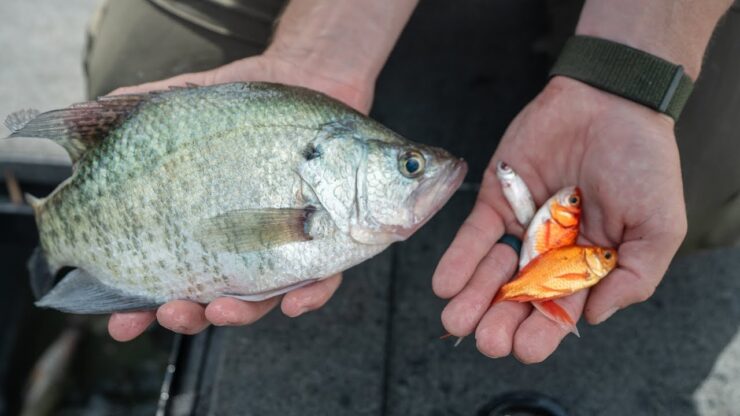Live bait and still-fishing are by far the most popular way to catch crappie. It does require a little bit more tackle and some finesse, but live bait probably accounts for more fish than any other method. If you plan to fish through the ice, live bait is the way to go.
Getting set up for live-bait fishing is not difficult. Most of the gear is widely available and inexpensive.
We’ll start with the basics…
Table of Contents
ToggleTackle Boxes: Soft vs Hard Boxes
Hard box
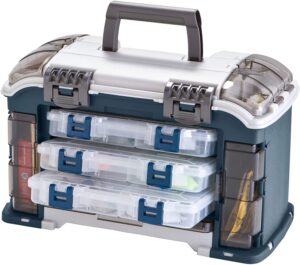
Soft box
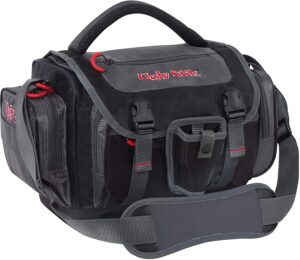
A tackle box is an essential piece of equipment. In a short period of time, you will accumulate a lot of tackle, and you will need to have it organized so you can find it fast. Some people have tried to use ordinary toolboxes with varying degrees of success, but you really need a specially made tackle box. They don’t cost that much compared to what they do, so there is no good reason for not having one.
There are many different styles available, from simple plastic compartmentalized pocket-sized boxes to multi-drawer chests that hold 1000s of pieces of equipment. Trust me on this from experience…in most cases, bigger is better! I would get the largest box I could find. Then, you can buy a fishing vest (another ‘can’t do without’ piece of equipment, in my opinion), and smaller pocket boxes to carry what you need wading, or in a belly boat or in a sit-on-top kayak.
There are 2 basic styles:
- Soft-sided
- hard plastic
The softboxes are made from Cordura nylon and store your gear in smaller plastic pocket boxes, so they are convenient for kayakers, float tubers, and waders. They won’t hold as much as a hard box, but they weigh less. They are also not weatherproof, but the hard plastic boxes inside are. Hard boxes are bulky and heavy but come in large enough sizes to hold most of your gear in one place (you will eventually own more than one box, I assure you).
Which style you will ultimately use is a matter of personal taste.
Just make sure the tackle box you are looking at can hold most of the equipment you think you’ll need, then get a bigger one.
Simple And Effective Rigging
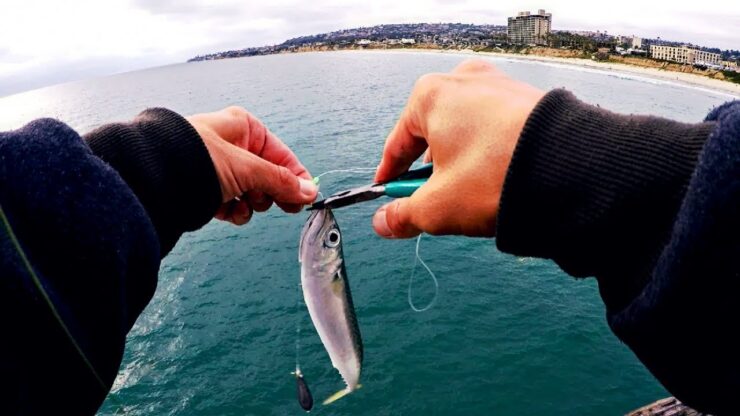
Rather than explain all the hundreds of kinds of hooks that are on the market, let’s just say that you need one kind of hook, in maybe 2 or 3 sizes for crappie. You need light wire Aberdeen hooks in sizes 2, 4, and maybe 6. That’s all. Hooks are sized by the gap or distance from the shank to the point. The smaller the number, the smaller the hook gap.
The thin light wire hook does less damage to the minnow and keeps it alive longer. Also, crappie have a somewhat largemouth, but it is very tender, hence their nickname; Papermouth Bass. The thin wire does not tear their mouth tissues as bad.
There are many specialty hooks out there, but the light wire Aberdeen is a time-proven to be the best hook for crappie.
Sinkers are needed to keep control of your bait and present it at the desired depth. There are different situations that call for different sinkers, but for general crappie fishing, you will want to use a simple bell sinker in 1/8 oz. size. This will allow you to ‘feel’ the bottom without hanging your hook up on it. If you are in heavier current or extra heavy cover, you can use a ‘pinch on’ type split shot that will pull off the line if it gets hung up, saving your fish and hook.
Various types of sinkers
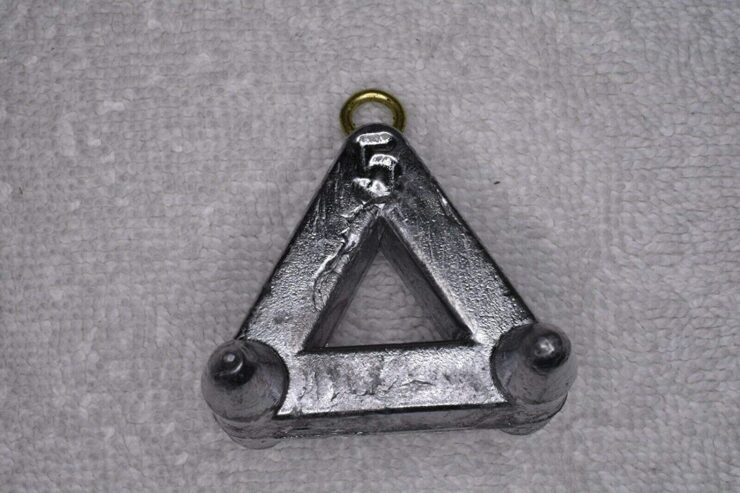
A standard ‘fish-finder’ rig is to rig two dropper loops about 18 inches apart, above a sinker. This lets you fish at 2, or even three different depths at the same time, and even with two different baits. It is not uncommon to hook 2 fish at once with these rigs.
The other basic rig you will use for crappie is the Bobber rig. There are many types of bobbers on the market but the only ones that concern us are the ‘pencil’ type bobbers in the smaller sizes. These will react to the slightest nibble, and crappie is famous for biting very lightly at times.
The Bobber rig
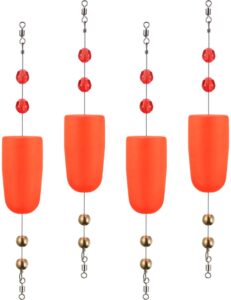
Simply run your line through the rubber band at the bottom, then attach a hook at the end of the line and clip on a 1/16th ounce split shot. You can slide the line to the correct depth.
You will want a good minnow bucket. A styrofoam one works just fine. There are more expensive ones out there with aerator pumps and such, but they are really overkilled. If you want to get your own minnows, a small 4′ cast net is great. If you plan to fish at night, get a lantern.
There are snap swivels, barrel swivels, bobber stops, and a plethora of other gadgets out there, but none are necessary.
This is all you need to catch crappie from now on.
Live Bait and Prepared Baits
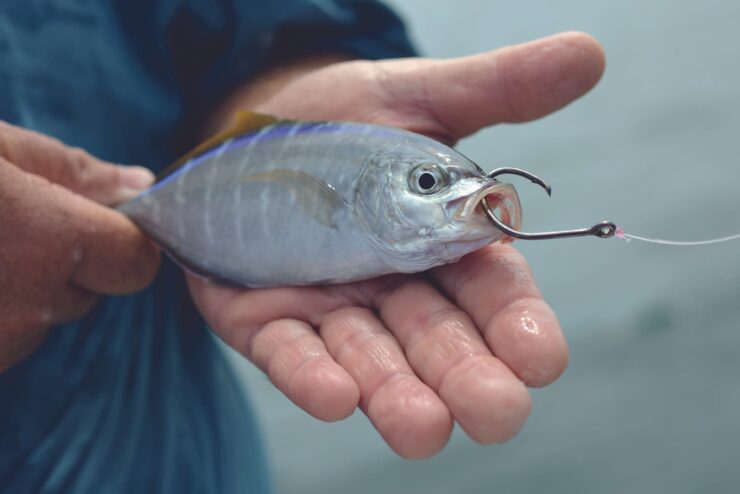
The live bait of choice for crappie is minnows. Crappies are almost exclusively minnow eaters. They migrate all over large lakes in search of schools of minnows to prey on. Anywhere you find large numbers of minnows, chances are, there are crappies nearby.
Although the term ‘minnow’ is commonly used to describe any small, silvery fish, the minnow family (Cyprinidae) represents the largest family of fishes in N. America. The family includes some rather large members, such as carp and goldfish, but most are under 4″ in length. There are thousands of species of minnows and they live pretty much anywhere there is water.
The main species we are concerned with is the one you will most likely see in your local bait shop…the Fathead Minnow (Pimephales promelas). They are tough and hardy, can tolerate a wide range of temperatures, and stay lively on the hook.
You want them in smaller sizes, usually no bigger than 2″ in length.
1. Fathead Minnow (Pimephales promelas)
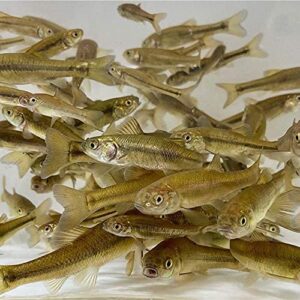
Another minnow you might see from time to time is the Emerald Shiner (Notropis atherinoides). It is more popular in the Northern U.S., but it can be found all the way down to Texas and Alabama. This is a minnow of big waters, such as the Great Lakes, the Hudson, and St. Lawrence Rivers.
2. Emerald Shiner (Notropis atherinoides)

Although not a minnow, crappie also attacks schools of threadfin and gizzard shad. These are actually members of the herring family. They will not stay alive on a hook, and crappie will not eat dead minnows, so we will concern ourselves with the two previous species.
Minnows should be hooked lightly either through both lips, the tail, behind the head or through the back, taking care not to damage the lateral line. This will kill the minnow.
It is worth noting here that there is one more bait that seems to work on crappie. In most states, it is considered ‘live’ or natural bait, even though it is a prepared dough bait. It is made by Berkley and is called Crappie Nibbles. You can fish on a hook by itself, or tip a jig with it. There is another similar product marketed by Nitro.
I have personally never used them, but if even half of the things I’m hearing about them are true, it may be worth a try.
Still-fishing is very relaxing, and at times, can be a good teacher of patience. Don’t let all the hyped-up ads for expensive fishing tackle fool you. You can catch crappie from now on with nothing but a cane pole, a sinker, a hook, and a minnow.
Before you go, here are some more choices
Happy fishing
Meet Maria Alexander, the fearless adventurer steering the ship at KayakPaddling.net. Her mission? To convince you that life’s too short for dry land and that the best stories always start with “So there I was in my kayak…”
Related Posts:
- Heavy Duty Fishing: 11 Best Rods And Reels For Big Fish 2025
- 16 Best Kayak For Beginners 2025 - Kayaking Adventure Gear
- 10 Best Saltwater Fishing Boats - Ultimate Angling Adventure
- 12 Best Fishing Lures Ever 2025 - Baits That…
- 11 Best Cordless Drill For Ice Auger 2025 - Tools…
- 12 Best Kayak GPS 2025 - Find Your Way to Adventure

